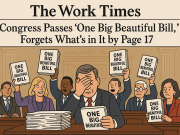Empowering the Future: Gender Budgeting in Government Financial Strategy
As we delve into the 21st century, governments worldwide are re-evaluating their financial strategies through the lens of inclusivity and equality. One transformative approach gaining momentum is gender budgeting. This innovative method recognizes the pivotal role of gender equality in fostering sustainable economic growth and seeks to embed this principle at the heart of government financial policies.
Gender budgeting involves a comprehensive assessment of government budgets to ensure that public financial resources are allocated in a manner that promotes gender equality and empowers marginalized groups. It is an approach that transcends the traditional confines of budgeting processes, highlighting the importance of gender-responsive policies in national economic agendas.
The Case for Gender Budgeting
The premise of gender budgeting is simple yet profound: by evaluating the impact of financial policies on different genders, governments can address disparities and promote equitable opportunities. This is not merely a matter of social justice but an economic imperative. Studies have shown that gender equality catalyzes economic growth by boosting productivity, enhancing organizational effectiveness, and fostering innovation.
When budgets are scrutinized with a gender lens, policymakers can identify gaps and biases that inadvertently perpetuate inequality. For instance, public spending on infrastructure that fails to consider women’s needs or safety can limit their access to economic opportunities. Conversely, investments in areas such as healthcare, education, and domestic violence prevention can have profound socio-economic benefits for women, ultimately benefiting society as a whole.
Implementing Gender Budgeting
Integrating gender perspectives into financial planning requires a strategic approach. It begins with a commitment from leadership across all levels of government to champion gender equality. The process entails reviewing existing policies, collecting gender-disaggregated data, and engaging with citizens and organizations that advocate for gender issues.
Successful implementation of gender budgeting can be observed in countries like Sweden and Canada, where meticulous planning and collaboration with gender experts have yielded positive results. These countries have demonstrated that inclusive budgeting is not an abstract ideal but a practical tool capable of delivering measurable outcomes in improving gender equity.
Challenges and Opportunities
While the benefits of gender budgeting are undeniable, the path to its full implementation is not without obstacles. Resistance can stem from entrenched systems, lack of awareness, and insufficient data. In response, governments must foster a culture of transparency and accountability. Training programs and workshops can equip civil servants with the skills necessary to incorporate gender considerations into budget analyses.
Moreover, gender budgeting represents an opportunity for governments to lead by example on the global stage. It positions them as pioneers in the quest for gender equality, setting precedents for other sectors to follow. Harnessing technology and innovation in data collection and policy evaluation can further empower governments to craft more informed, impactful budgets.
A Vision for the Future
As we envisage a future where gender equality is the norm, not the exception, gender budgeting emerges as a crucial stepping stone. By embedding gender equity into financial policies, governments can reshape the socio-economic landscape to be more fair and progressive. This shift promises to unlock the potential of all citizens, paving the way for a more sustainable and prosperous world.
For government professionals, the task is clear: embrace the vision, champion the cause, and steer the wheel of progress toward a more inclusive financial future.





























